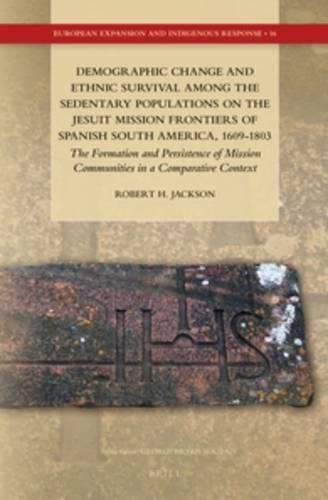Demographic Change and Ethnic Survival among the Sedentary Populations on the Jesuit Mission Frontiers of Spanish South America, 1609-1803: The Formation and Persistence of Mission Communities in a Comparative Context
Robert H. Jackson

Demographic Change and Ethnic Survival among the Sedentary Populations on the Jesuit Mission Frontiers of Spanish South America, 1609-1803: The Formation and Persistence of Mission Communities in a Comparative Context
Robert H. Jackson
Beginning in 1609, Jesuit missionaries established missions (reductions) among sedentary and non-sedentary native populations in the larger region defined as the Province of Paraguay (Rio de la Plata region, eastern Bolivia). One consequence of resettlement on the missions was exposure to highly contagious old world crowd diseases such as smallpox and measles. Epidemics that occurred about once a generation killed thousands. Despite severe mortality crises such as epidemics, warfare, and famine, the native populations living on the missions recovered. An analysis of the effects of epidemics and demographic patterns shows that the native populations living on the Paraguay and Chiquitos missions survived and retained a unique ethnic identity. A comparative approach that considers demographic patterns among other mission populations place the case study of the Paraguay and Chiquitos missions into context, and show how patterns on the Paraguay and Chiquitos missions differed from other mission populations. The findings challenge generally held assumptions about Native American historical demography.
This item is not currently in-stock. It can be ordered online and is expected to ship in approx 4 weeks
Our stock data is updated periodically, and availability may change throughout the day for in-demand items. Please call the relevant shop for the most current stock information. Prices are subject to change without notice.
Sign in or become a Readings Member to add this title to a wishlist.


